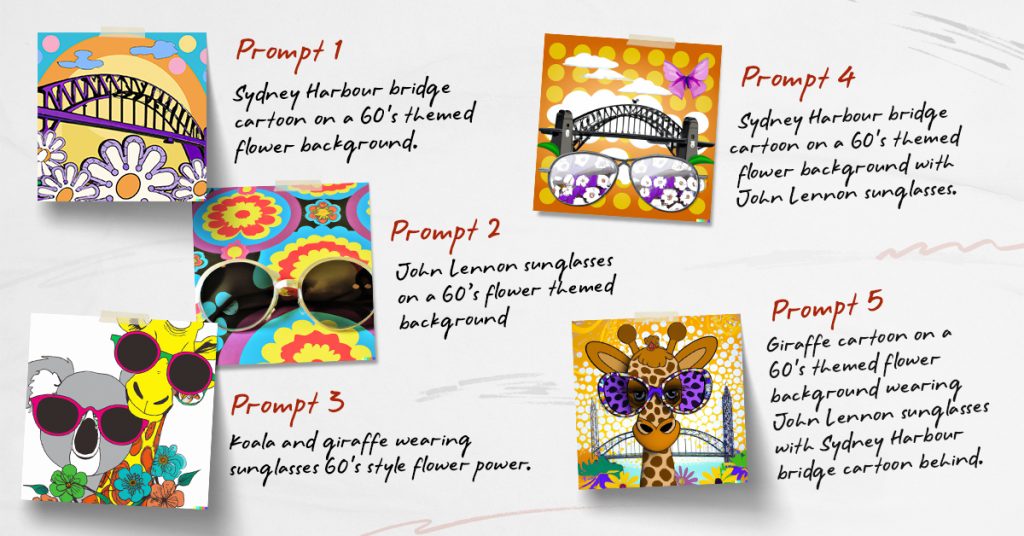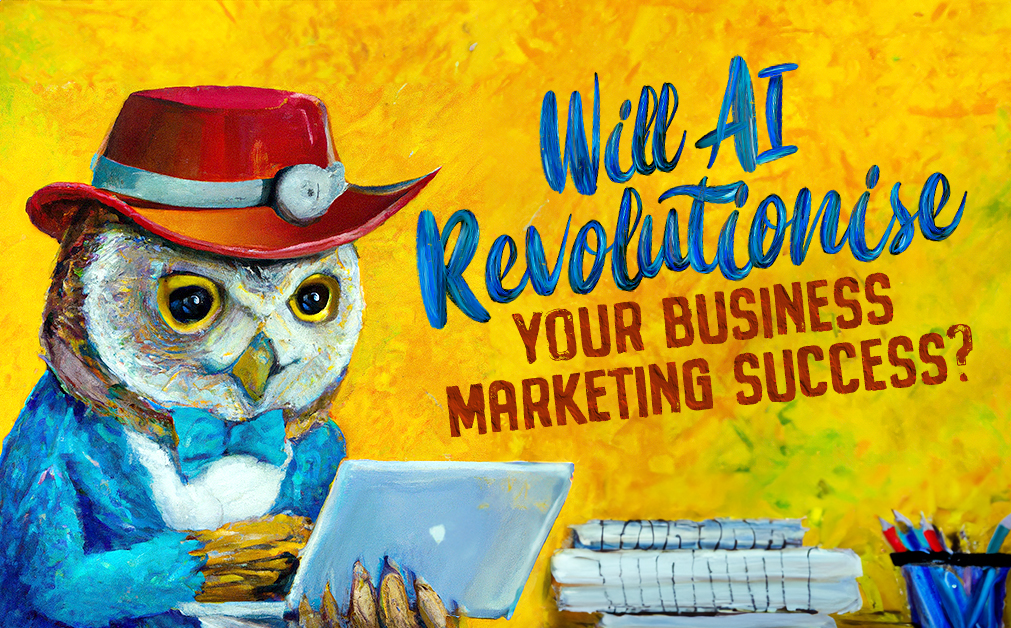As the digital landscape evolves, so do the Artificial Intelligence (AI) tools at our disposal. It has the ability to analyse data, predict trends, and streamline processes.
But, just how important is AI for business owners in their marketing strategies? And how much trust can we give AI without checking in on it ourselves?
Anyone can quickly produce high volumes of content using AI tools. However, it is one thing to generate large volumes efficiently, it is another to have content that will resonate with your customers and prospects.
As a business owner, do you have either the time or skill to be able to do this effectively? And do you know how to prompt AI tools into producing the kind of content that will really speak to your audience and will it still be backed by the right strategy?
So, what makes content good?
There is a lot of content being produced these days, but much of it lacks the quality and substance that will really resonate with audiences.
When scrolling through your emails, ask yourself, how many do you really open and read? Probably not many if you are being really honest.
Well written and engaging content needs to tick a few boxes in order to get a guernsey at the starting gate.
It needs to be:
- Written with a specific audience in mind specifically targeting their needs and pain points while being strategically aligned to your business goals.
- Engaging and interactive that will tug on the heart strings when telling a story, engage through polls and quizzes, or be accompanied by captivating visuals that bring added meaning.
- Informative and educational providing lots of free and valuable information like e-Books, sharing expert insights, and exploring topics in greater detail. This is fundamental in building trust and building a brand and positioning yourself as a thought leader.
- Maintaining consistency and sharing quality well-researched and produced pieces, works wonders to develop loyal audience. Your followers get to know and expect a similar style and approach when they see and engage with your content.
While AI is a game changer for many businesses, we need to tread carefully when thinking that it can replace the personal touch.
How can you use AI for your marketing?
There are three key areas in which AI is truly shining:
- research and analysis
- automation
- creating content, known as ‘generative content’
You can use AI to address these areas and if used correctly, there is no doubt about it, AI can be a powerful ally.
Let’s consider some of the common core marketing functions that a small business needs.
Research and Analysis is an essential component of a marketing strategy.
In this Big Data age, a person will struggle to comb the large amount of data available efficiently. AI can navigate immense levels of data in seconds, and also supply real-time insights for use in your marketing strategy. Saving both time and money while still producing quality outputs.
Automation speaks to manual tasks once carried out by people, now being undertaken by AI.
Tasks such as answering customer enquiries with chat bots, scheduling social media campaigns, and using customer profiling and segmentation to bring in new leads.
AI content creation opens up a whole new world of visual creation and can deliver access to a whole new level of efficiency. A single prompt can become a full blog post within seconds and well-crafted blog content can be regenerated as social posts using AI writing tools. The most notable of these is Chat GPT.
Other tools such as Grammarly, Wordtune, Rytr and the like have been around for some time, well before Chat GPT was launched.
These programs use AI to provide a better written experience for users and consumers alike. Their goal is to better serve punctuation, narrative, and tone of voice as a result of prompts directed entered by their ‘human driver’.
Being able to generate ‘original’ designs in tools such as Dall.e or Midjourney can save time and effort and using tools such as Canva provides access to endless templates that can easily be populated with content.
While these tools are game changing, they alone do not make a successful marketing strategy. The key to a successful marketing strategy, is to have someone with an intrinsic knowledge of the marketing space and who can apply this understanding to your business’ goals while utilising AI tools to improve efficiencies.
Without the strategic understanding of the big picture, no amount of fast-copy and templating can save a brand campaign. Being able to input the correct information and prompts in a logically sequenced and strategic way requires implicit understanding of marketing strategy and brand management.
An AI tool is only as good as the user, much the same as using software. Leveraging AI content without a personal touch poses significant risks for a small business. Often the content that is generated lacks alignment to business goals and isn’t of sufficient quality to really engage your audience. The net result is content produced for the sake of producing content, or more commonly what I refer to as ‘digital noise’ that’s primary purpose is to just take up internet space.
What are the limitations of AI in marketing?
To know AI, we must first try and understand AI.
AI works on a series of interconnected nodes that connects data that is accessed by a prompt. That prompt can be verbal, written, an image, or it can be implied by the context of the previous inputs.
With that image in mind, consider these key limitations of AI:
- AI has no emotional intelligence.
- AI technology cannot understand empathy.
- AI learning comes from a restricted source of content.
- AI is a language-based model.
- AI image generation is still in its infancy.
- AI is limited to its human generated prompt.
AI is an amazing tool, no doubt about it. But it lacks skill in the intuitive aspects that a marketer can bring to a business, including judgement and human emotional connection, the most persuasive element of all.
How effective can AI only marketing campaigns really be for a business?
AI has limitations as a language-based model as a this requires a text prompt to be entered. The model interprets this prompt based on set language rules and from there, the model applies these rules to accurately predict and produce new sentences.
So, ask yourself, as a business owner, do you really know what exact marketing prompts to input in order to get exactly what you need, and more importantly, do you have the time to sit and play around it alongside all the other things you need to do?
Currently, Chat GPT’s knowledge bank doesn’t go beyond September 2021 which means that AI has a limited bank of resources to create content from, a critical consideration for people looking for the latest information.
It also means that content generated by AI only, risks being repetitive and lacks the level of critical thinking and analysis that a marketer will bring to a marketing campaign. The net result is blog posts and copy that are very similar, rather than thought provoking pieces that bring true value to the reader.
AI image generation still has a long way to go. The ability for AI models to turn text-based prompts into artwork is astounding. AI can create a purple space cat in the style of the Renaissance masters with a single prompt.
But can it produce high-level branded content?
No, not yet. And certainly not the kind you would want for your brand.
Take for example this Heinz Ketchup campaign. It emphasises the graphic limitations of AI as the outputs were still somewhat rudimentary for a brand such as Heinz. However, while this campaign was a success for Heinz, it was only due to the ability of a skilled marketing team who guided the campaign, brand and marketing strategy towards success.
This proves that not only does AI still need someone skilled to enter the correct prompts to create and massage copy text, but also a skilled designer to create visuals worthy of brand alignment.
Never forget that just because you can use the software or AI tool, it doesn’t mean you a skilled design professional, marketer, or copywriter.
What are some other considerations when using AI?
Some other challenges to consider when using AI tools:
- AI can only interpret a prompt that is within its current capability.
- AI does not have awareness, perspective, or inference.
- AI cannot think outside-the-box.
- AI cannot offer creative solutions beyond its parameters.
- AI cannot judge good content from rubbish.
- AI cannot determine what is best for your brand.
And therein, lays the biggest problem of all. AI cannot work without a human to guide and manage the process and outputs.
So, let’s look at some examples.
AI can write content, but does that make it a copywriter?
Let’s have a look at this example written by a prompt entered into Chat GPT asking about benefits of repurposing content for marketing campaigns:
Content repurposing for marketing offers advantages in today’s dynamic digital landscape. It can empower businesses to enhance their marketing strategy with the use of existing material. Balancing the benefits of old content with the need for innovative marketing approaches is central to a successful marketing strategy that stands the test of time.
This is certainly an acceptable piece of writing, but compare this with another example, generated by a marketing and content strategist:
In today’s dynamic digital landscape, content repurposing is proving continually advantageous to marketers. It’s ability to reignite the past with the modern, whilst saving time and budget, ensures a high reinvestment level for your business. Innovative approaches to content repurposing can be a central pillar in a winning strategy, empowering businesses better flexibility to grow.
See the difference and ask yourself, which one resonates with you more and which one is likely to connect with your audience more?
Can AI replace a graphic designer?
We know that AI has a role to play in generating pieces of graphic design, but will it be able to replace the role of a graphic designer?
I doubt it, but it can certainly revolutionise the way we approach design and the process of creating a piece of final art.
Businesses will still need designers with creative and inquisitive minds in order to be able to create the prompts for AI to generate the designs. This requires an intrinsic understanding of brand, strategy, and audience. Along with some of the basic design principles of design e.g., colour, font, alignment, white space, and sizing just to name a few, not to mention the emotional triggers that stimulate visual engagement of an audience.
Here are some AI generated images and their final accepted designs.
The Client Brief
Create a poster for an end of summer campaign that has a 60’s style theme with Sydney Harbour as a feature to promote the sale of sunglasses. Make it Australian bright, fun and vibrant.
We used Dall.e to create some design inspiration.
Here are the prompts used and the output generated:
- Sydney Harbour bridge cartoon on a 60’s themed flower background.
- John Lennon sunglasses on a 60’s flower themed background.
- Koala and giraffe wearing sunglasses 60’s style flower power.
- Sydney Harbour bridge cartoon on a 60’s themed flower background with John Lennon sunglasses.
- Giraffe cartoon on a 60’s themed flower background wearing John Lennon sunglasses with Sydney Harbour bridge cartoon behind.

As you can see the AI was definitely highly efficient in generating inspiring ideas that our designers could develop into the final piece. Once this would have been done manually, searching sites like Pinterest, Google, Shutterstock and the like to find inspiration. Being able to use AI as part of a design process has revolutionised the way designers work and resulted in truly original design creations and lessened our use of stock imagery.
But as a business owner, are you creative enough to be able to prompt AI into providing you design inspiration for a campaign?

What’s the trick to staying ahead of the game?
While these are only a few examples, the point is, that AI is only going to be as good as the ‘human driver’.
If you really want to stay ahead of the game, you will still need to have a team of marketing professionals behind you who can guide your strategy and content in the following ways:
- Strategic alignment to the brand and brand voice.
- Contextual understanding that will garner emotional engagement with your audience.
- Managing ethical considerations and the ability to be authentic.
- Creativity to ensure your content has personality and is captivating.
- Soft skills and the ability to communicate with empathy.
What lies ahead for marketing and business owners?
The future of marketing lies in the collaboration between AI and human expertise. Marketing strategists, copywriters and designers are able to embrace AI as a tool to make their job more efficient and improve the quality of output for clients.
While AI is a truly transformative technology, it remains a tool that still requires significant human guidance to infuse creativity, emotion and strategy.
As a business owner the ability to use AI tools will not replace your marketing team. These professionals are the ones that have the skills that AI doesn’t have. They are the creatives and strategists that you still need in order to achieve your business marketing success.
Considering incorporating AI into your marketing success?
Remember, it’s the creative strategist behind the AI who ultimately turns data into personalised journeys, anecdotes into impactful stories, designs into captivating visuals and engagements into lasting connections.
Read here for more information on marketing strategy, content and design.
Blog header concept generated by AI.
